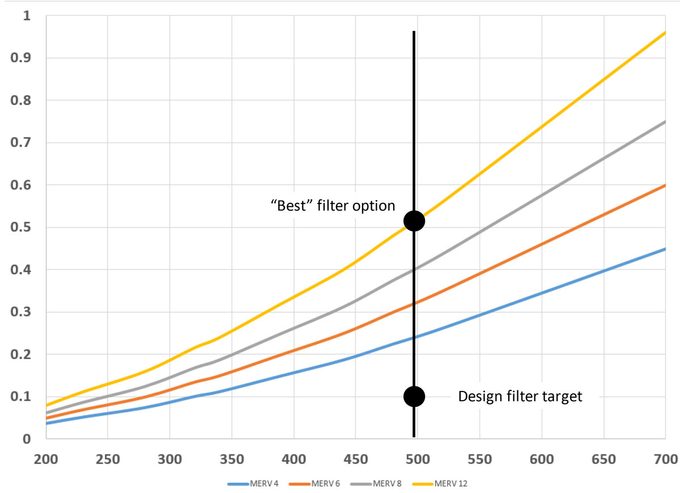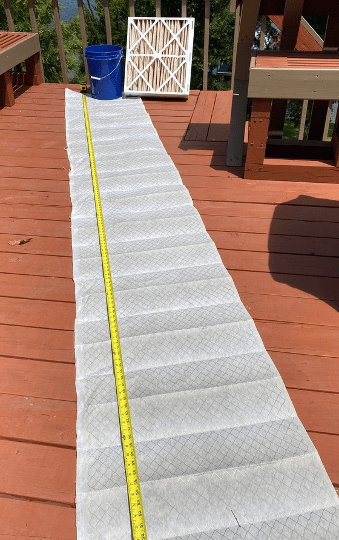Why High-Performance Furnace Filters May Ruin the Blower
Updated: Oct. 20, 2023

Adapt your ductwork design to ensure adequate system airflow for homeowners who intend to use their blower filter as a whole-house air cleaner.
Furnace filters designed to act as whole-house air filters add stress to the blower in an HVAC system by impeding airflow. Two design adjustments at installation can resolve this issue and potentially prevent an off-hours call from an unhappy customer.
On This Page
The Filter Effect
The blower filter in a typical HVAC installation has one job: to protect the blower from damage caused by dirt and debris entering the system. Furnace-filter manufacturers, capitalizing on tighter home construction and homeowners’ desire for clean indoor air, market filters labeled “Better” and “Best” which focus on indoor air quality.
Some of these “Best” filters can remove particles as small as 0.3 microns, which make them HEPA-standard compliant. Ratings for filters range from 1 to 20 on the MERV (minimum efficiency reporting value) scale, with a 1 rating offering the least filtration.
Unfortunately, the MERV scale measures a filter’s ability to affect indoor air quality, not how efficiently it delivers air to the blower, says Eric Weiss, technical trainer for Trane Residential. He compares these highly-restrictive filters to wearing a mask for virus containment: If you’re wearing one that does its job properly, it becomes hot and hard to breathe through when you exert yourself.
The same thing happens when homeowners replace high-airflow filters provided by installers with restrictive, high-MERV filters. Decreased airflow causes the blower to run hotter because it loses the benefit of any cooling action created by greater airflow. In addition, this causes the blower to work harder to meet the demand for warm or cool air throughout the house. Both situations add wear to the blower motor and shorten its effective lifespan.
Furthermore, a blower forced to work harder than it was designed to also makes more noise, from motor operation and airflow through the ductwork. Weiss mentions that when he worked as a field technician, many of the complaints he heard from homeowners related to noise. Sometimes noise is related to improperly sized heating/cooling units, but often it stems from poor airflow.
Making Adjustments
Fortunately, Weiss says you can correct any of these issues easily when designing/installing a new HVAC system. You can also accomplish this through a retrofit, but at more cost to the homeowner and more effort for the HVAC technician.
When Weiss designs a new system, he strives for only 0.1-in. w.c. (water column) pressure drop between the supply static pressure and that of the air moving through the return ducting. Products from each manufacturer are different, but a typical 12 MERV filter can add 0.4-in. w.c. static pressure to the system.
Here are the most common ways Weiss drops that static pressure reading back into the target range:
Design Adjustment 1: More Filter Area
Increase air flow to the blower by increasing the size of the filter. You can do this two ways:
Upgrade ductwork to accept a larger filter size than originally installed. This may mean moving the filter away from the side of the furnace to create the space needed for the duct to flare out and match the filter size, then taper back to rejoin the existing duct.
The second option involves doubling the filter area by ducting in a second filter to supply the blower from a second side of the unit or from underneath. According to Weiss, doubling airflow reduces the air velocity loss by half. That reduces the air pressure resisting the blower action by a factor of four.


The chart displays the static pressure drop curves for filters at four MERV ratings. The vertical axis shows system static pressure drop by 0.1 inch w.c., and across the horizontal axis it shows system air flow in cubic feet per minute (CFPM). The black line shows the testing standard of 492 CFPM, and where the design target (0.1 pressure drop) and where a 12-MERV filter labeled “Best” would fall.
Weiss says doubling the filter area effectively cuts the flow rate in half, while sullying the same volume to the blower. If you follow the yellow line back to the 250 mark, you see that a double MERV-12 filter can deliver airflow at a rate that nearly matches the target pressure drop.
NOTE: The data set that created this chart is a general representation of products in the market. Specific filter performance varies somewhat from this illustration based on its unique construction.
Design Adjustment 2: Thicker Filter Media
Weiss also recommends installing or cutting in a frame that accommodates a thicker filter any time space allows. Instead of a thin, single-ply filter, which provides 18 to 24 inches of filter media for returning air to pass through, a five-inch filter measuring 21 inches wide by 23.5 inches tall provides 16 feet of filter media. Air can pass through anywhere along that 16-foot length. This substantially increases the volume of air the filter can process and reduces the stress put on the blower.

Learn the Homeowner’s Intentions Early
The key to preventing the entire issue lies in communication between the HVAC contractor and the customer, advises Weiss. “One of the most important questions I have is: ‘Are you concerned about indoor air quality?’ Then, ‘Are you looking to use a better air filter with your new system?’ ” he said. “If they are, that’s going to affect my system design.”




















